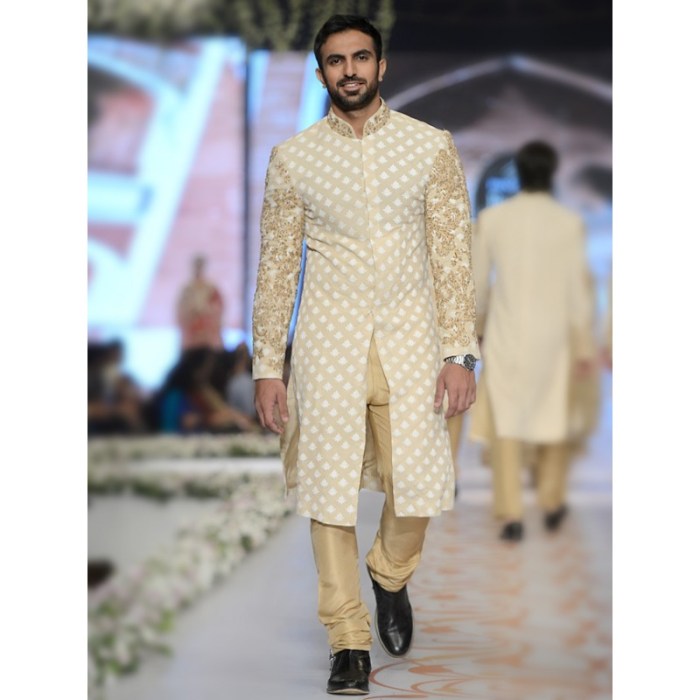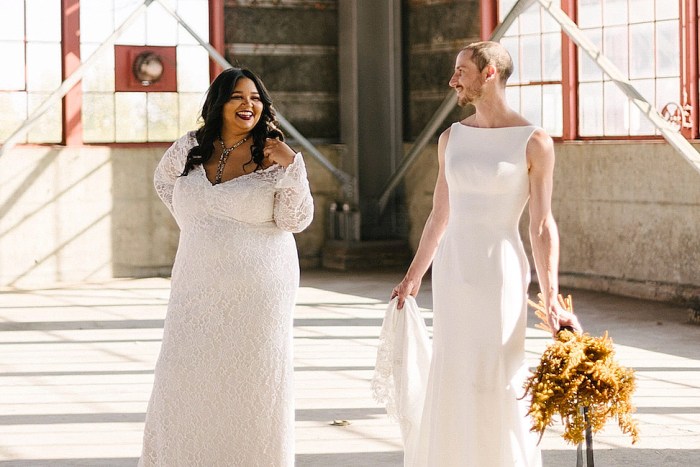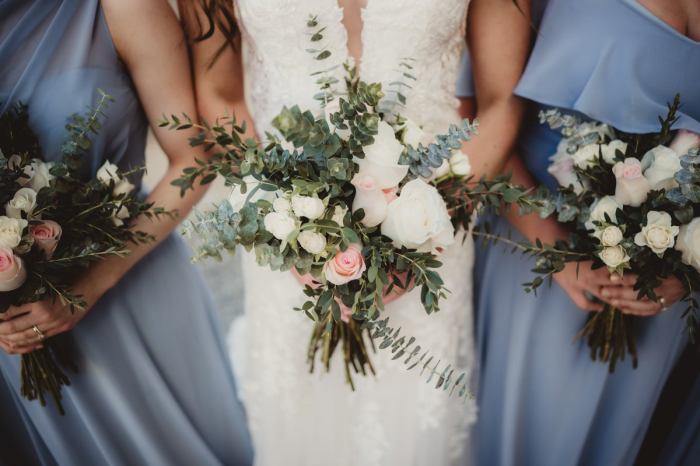Guy in Wedding Dress A Cultural Analysis
A Guy in a Wedding Dress: Deconstructing Tradition

Source: stylesgap.com
Guy in wedding dress – The image of a man in a wedding dress—a stark subversion of established norms—provokes a spectrum of reactions. It’s a visual challenge, a whispered rebellion against the rigid scripts of matrimonial expectation, a canvas upon which societal anxieties and evolving gender identities are painted in bold strokes. This exploration delves into the multifaceted implications of this unconventional choice, examining its visual impact, symbolic resonance, and the practicalities of its execution.
The Visual Impact of a Man in a Wedding Dress
The sight of a man in a wedding dress is undeniably arresting. Reactions range from stunned silence to outright disapproval, depending heavily on cultural context and individual sensibilities. In some cultures, the very idea would be considered scandalous, while in others, it might be viewed as a daring expression of individuality or a playful subversion of tradition. The impact hinges on the specific design, the groom’s demeanor, and the overall atmosphere of the wedding.
A man’s wedding dress can take myriad forms. Imagine, for instance, a sleek, tailored sheath gown in midnight blue silk, its minimalist silhouette emphasizing the groom’s physique. Alternatively, picture a flowing, ivory gown crafted from delicate lace, its romantic details offset by strong, masculine shoulders. The fabric choices are as diverse as the grooms themselves: crisp cotton for a modern aesthetic, opulent velvet for a dramatic flair, or even a daring use of unconventional materials like embroidered denim for a subversive twist.
The silhouette can be streamlined and contemporary, or it can evoke the grandeur of historical gowns, subtly reinterpreted for a male form. The possibilities are endless, each choice narrating a unique story.
| Attire | Fabric | Silhouette | Overall Impression |
|---|---|---|---|
| Man in Wedding Dress | Silk, Lace, Velvet, Cotton | Sheath, A-line, Ballgown (adapted), Tailored | Unconventional, Bold, Striking, Romantic (depending on style), Subversive |
| Traditional Male Wedding Attire | Wool, Linen, Silk (often in suits) | Tailored suit, Tuxedo | Formal, Classic, Traditional, Expected |
Interpretations and Symbolism
The decision to wear a wedding dress transcends mere fashion; it carries significant symbolic weight. For some, it might be a powerful statement of gender fluidity or nonconformity, a rejection of prescribed gender roles. For others, it could be a purely artistic expression, a bold visual metaphor within the context of the wedding ceremony. The act itself challenges the deeply ingrained societal expectations surrounding masculinity and marriage.
Compared to other unconventional choices, such as brightly colored suits or themed costumes, the wedding dress holds a unique position. It’s not just a deviation from the norm; it’s a direct appropriation of a garment traditionally associated with the bride, thus amplifying the statement’s power. Historically, men have worn dresses in various ceremonial contexts, though often with different connotations.
Consider, for example, the elaborate robes worn by kings and nobles in historical courtly settings; these garments, while not wedding dresses, held significant symbolic meaning relating to power and status.
Social and Cultural Context

Source: apracticalwedding.com
Societal perceptions of a man wearing a wedding dress vary greatly depending on cultural norms and individual beliefs. In some societies, such a choice might be met with open hostility or bewilderment, while in others, it might be embraced as a progressive and creative expression. The couple must consider the potential for misunderstandings or negative reactions from family members or guests, weighing the significance of personal expression against the potential for social friction.
Navigating this landscape requires careful consideration. Open communication with family and friends can help mitigate potential conflict, while choosing a supportive and understanding wedding venue and officiant can significantly contribute to a positive experience. However, the couple should also be prepared for the possibility of encountering prejudice or discomfort from some individuals, recognizing that their decision is a challenge to established norms.
The Wedding Planning Process
Planning a wedding where the groom wears a dress presents unique logistical challenges. Finding a designer or tailor experienced in creating wedding attire for male figures is crucial. Alterations are likely to be more extensive than for a traditional suit, requiring specialized skills and a keen eye for detail. Accessories, from shoes and jewelry to boutonnieres, will need careful selection to complement the dress and create a cohesive look.
Photography is another key element; a skilled photographer will capture the groom’s unique style and the overall atmosphere of the event with sensitivity and artistry.
- Finding a Wedding Dress: Begin by browsing online and visiting bridal shops, communicating your vision clearly to designers and consultants.
- Tailoring and Alterations: Find a tailor with experience in altering wedding gowns for male bodies. Multiple fittings will be necessary.
- Accessories: Choose accessories that complement the dress, considering the overall style and the groom’s personality.
- Photography: Hire a photographer who is comfortable and experienced in capturing unconventional weddings.
Potential vendors include:
- Specialized bridal designers with experience in gender-neutral or menswear-inspired designs.
- Experienced tailors specializing in bridal wear alterations and capable of adapting designs for male bodies.
- Photographers specializing in LGBTQ+ weddings or other unconventional ceremonies, possessing sensitivity and a keen eye for capturing unique moments.
Creative Expression and Artistic Interpretation, Guy in wedding dress

Source: zenfs.com
The concept of “a guy in a wedding dress” lends itself beautifully to artistic exploration. Imagine a striking photograph, where the groom, in a flowing white gown, stands against a stark, minimalist backdrop, his expression conveying both vulnerability and strength. A painting might depict the wedding scene with rich, symbolic colors, focusing on the interplay of light and shadow to highlight the groom’s unique attire.
A sculpture could capture the essence of the event, perhaps focusing on the interplay of textures and the subtle curves of the dress draped over the male form.
In a fictional scene, imagine the wedding guests’ reactions: a hushed reverence from some, a knowing smile from others, and perhaps a mixture of confusion and fascination from those less prepared for such a departure from convention. The air is thick with a sense of expectation, broken only by the soft murmur of conversations. The bride, radiant in her own attire, beams at her groom, a silent acknowledgment of their shared audacity and love.
The ceremony proceeds, a testament to their unconventional yet profound commitment.
FAQ Summary: Guy In Wedding Dress
What are some common fabrics used in men’s wedding dresses?
Common fabrics include silk, satin, lace, and brocade, chosen for their drape and luxurious feel. Lighter fabrics like chiffon or organza may also be used depending on the design.
How do I find a designer or tailor specializing in men’s wedding dresses?
Online searches focusing on “men’s bridal wear,” “gender-neutral wedding attire,” or “custom bridal design” can yield relevant results. Networking within the LGBTQ+ community or contacting bridal boutiques known for inclusive designs may also prove fruitful.
What accessories are suitable for a groom wearing a wedding dress?
Accessories can range from traditional items like a boutonniere and cufflinks to more unconventional choices reflecting personal style. Jewelry, belts, and veils can all be incorporated, depending on the overall aesthetic.
Are there legal considerations for a groom wearing a wedding dress?
Legally, there are typically no restrictions on attire for wedding ceremonies. However, religious or venue-specific regulations may need to be considered and discussed beforehand.



















